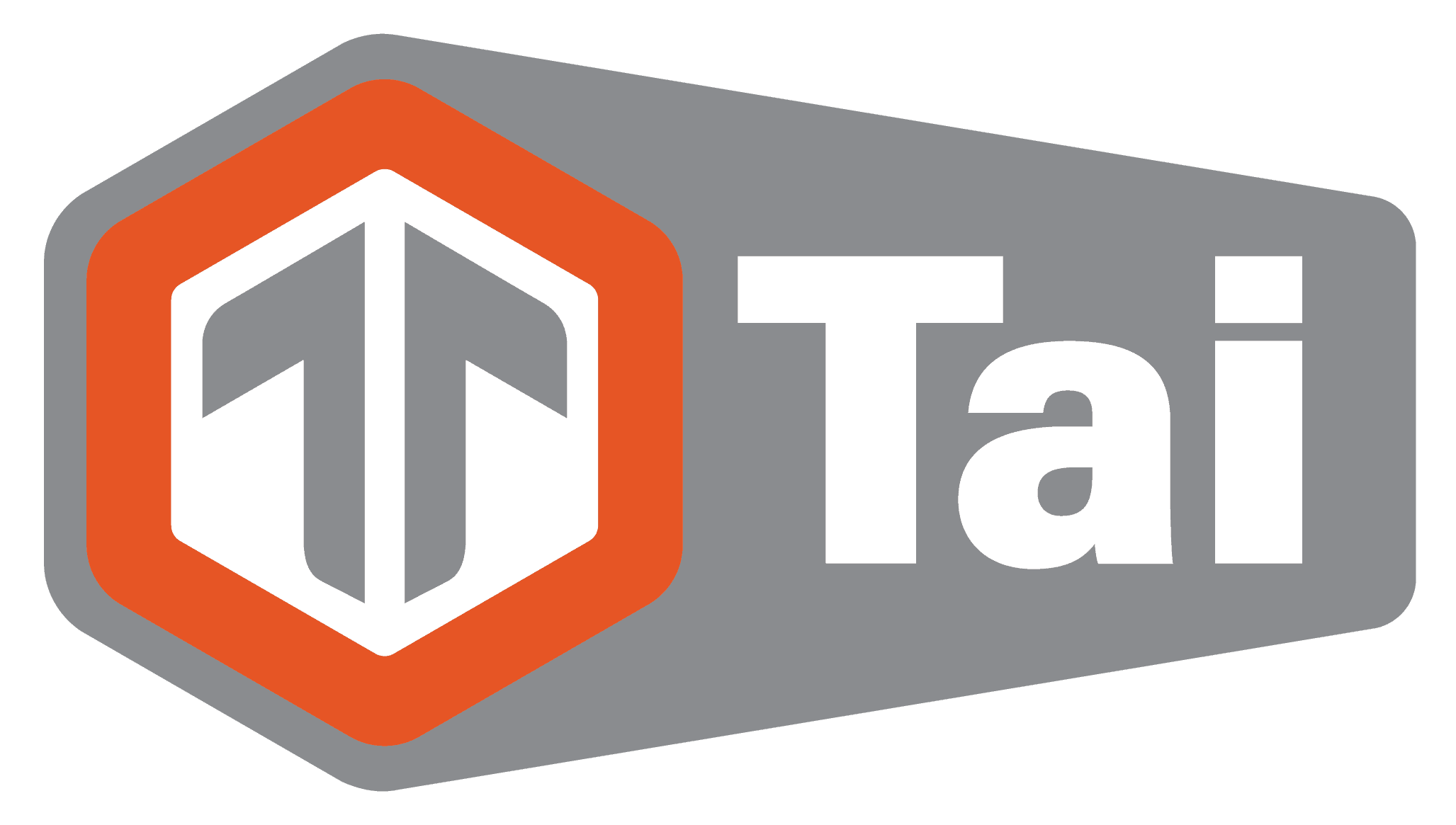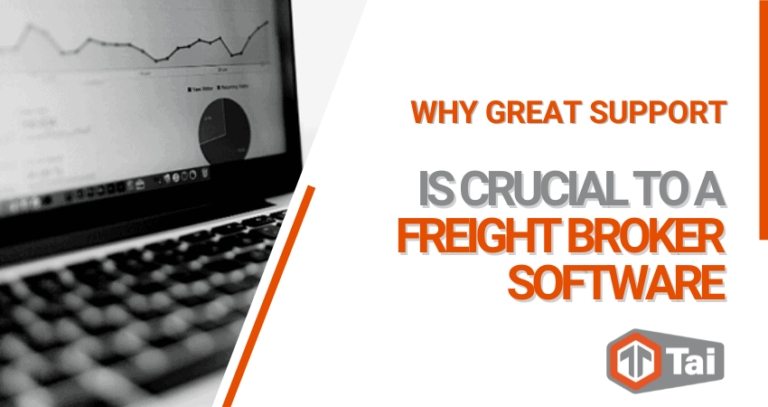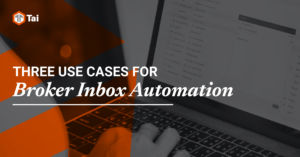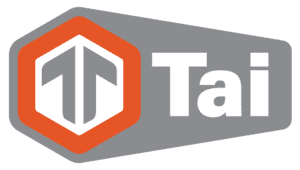Even if carriers can work directly with shippers, they rarely do. While, at first glance, this may seem the most straightforward option, it’s essential to keep in mind that finding partners and customers is an incredibly time-consuming and resource-intensive process.
When it comes to the shipper, many don’t want to spend their time worrying about choosing the right carrier capable of meeting their time and budget constraints. They also don’t want to spend their time verifying their reliability and staying in touch until the moment the goods make it to their final destination. For these reasons and others, both sides are looking to leverage the services of a freight broker to act as an intermediary.
However, even freight brokers will need some help to provide the best services to their clients. In most cases, they will use freight brokerage software that will pick up some of the slack and streamline some of their day-to-day operations, such as managing freight, paying carriers, invoicing shippers, and more.
However, what some experienced freight brokers fail to consider when choosing a transportation management system (TMS) is that the vendor also provides excellent customer support. Below, we will be a short rundown of some of the challenges faced by freight brokers, how transportation management software can tackle these issues, and how customer support can often be a differentiating factor when choosing the right freight management software.
Common Freight Brokerage Challenges
When it comes to the transportation industry’s supply chain, the freight broker’s main job is to connect shippers and carriers. In doing so, the freight broker will facilitate orderly and trustworthy communication between the two. Secondly, an effective freight broker will tender the load at a lower price to a carrier.
But to ensure profitability, skilled brokers will have to define the most efficient transport option that will benefit their own company and satisfy their customers. Several challenges even experienced freight brokers have a tough time dealing with. Among these, we can include the following:
- Quote Collecting – One necessary freight brokerage operation is about collecting quotes from multiple sources. Yet, manually getting quotes from each carrier is a time-consuming process.
- Balancing Spot and Contracted Rates – While contracted rates are agreed upon based on specific lanes and cargo volume, spot rates are negotiated on a load-by-load or lane-by-lane basis. Balancing between them is particularly challenging for a freight agent, as there is hardly any certainty when it comes to reevaluating contracts, moving to another bid, changing carriers, or shifting to spot rates when appropriate.
- Carrier Management – When working with carriers on a long-term basis, freight brokering companies need to be aware of when the contracts are expiring and must be updated.
- Delivery Supervision – During shipment deliveries, skilled brokers will need to smooth out any issues on the carrier’s side. These issues may include things such as timing, damages, or pricing.
These challenges mentioned above and several others can be addressed and streamlined by using freight software that’s specifically aimed at freight brokers.
Different Freight Broker Software Modules
During its start-up phases, a freight broker business can handle its few loads manually. But as its network grows and expands, it will need to delegate some of the responsibilities. One of the most cost-efficient ways of doing this is by investing in a TMS platform that will systematize the shipment process, organize operations, and improve the overall brokerage services.
Besides, TMS software will also need to interact and integrate with other solutions and software such as shipping marketplaces, load boards, logistic management platforms, accounting software, warehouse management, and various other solutions. The freight broker software will use EDI and API standards to distribute business information among the other third-party and partner systems.
That said, freight broker software is a modular system, which is comprised of different components (modules) as follows:
Load Management Module
The load management module deals with load lists. They contain load descriptions with critical information such as lanes, rates, vehicle types, cargo details, and more. There are different ways of distributing loads among carriers:
- By synchronizing with shipping marketplaces and load boards, brokers can generate a load list for each and post it on their trading desks. Brokers will be notified if the carrier will choose their load. Simultaneously, the carrier’s details will be automatically logged into the system.
- Load tendering directly in the carrier’s system is another method if the load matches their vehicles and experience.
- Allowing carriers to access the internal load board will allow them to search and book loads directly from the TMS software.
Rating Engine Module
As part of the rate acceptance process, there are numerous personalized agreements between brokers and carriers. A rate engine will streamline much of the work that goes into quoting. A useful rate analysis and reporting tool will help brokers’ rating decisions. Since these TMS platforms are integrated with multiple shipment sources, they gain access to a large freight data pool.
And by analyzing this real-time information, the software can recognize market trends. In doing so, freight brokers are better positioned to place or request bids or select the right lanes and carriers..
Shipment Tracking Module
Real-time shipment visibility over the shipment lifecycle will help brokers reduce any possible disruptions. With such technology, the freight broker is always aware of the cargo’s location, avoiding logging into different sites or continuously on the phone.
If charging customers by the mile is required, brokers will also need a mileage calculation tool embedded in the tracking module. Using such a tool, brokers will have access to realistic arrival times and compare different route options for their carrier partners.
Customer Portal Module
Over the customer portal, shippers can tender their loads. The portal can be integrated with the tracking software to allow customers to track their shipments in real-time. It’s through the customer portal that skilled brokers keep their customers informed and satisfied.
Accounting Module
The accounting module will ensure that all those involved will receive the right payment. Usually, brokers will bill shippers first, then pay carriers ex-post. But if a broker delays payments or if the carrier hasn’t worked with them yet, they will pay on cash on delivery.
The billing tool will generate invoices, automatically create bills of lading, proof of delivery, rate configuration, and more. Through EDI integrations, brokers can receive invoice data directly from carriers and send data directly to the customer’s system. The accounting module can also separate the billing board to manage load payments.
Great Customer Support
No matter how proficient a freight broker software is or how many functionalities it might have, it will always contain bugs. And while great support is often an afterthought for many freight brokers looking to get a new freight management software, a lousy support team can leave you hanging in times of need, costing you time and money in the process.
The Benefits of Great Customer Support
- Timeliness – Whenever a freight broker uses a TMS platform, they need to get access to support promptly. Most of us do not expect instant responses to problems, but we shouldn’t also be kept waiting for hours or days before we have any urgent issues fixed. When considering a transportation management software purchase, brokers are always advised to inquire the vendor regarding their level of customer support. By looking over the policies and finding out what the response times are, you will know whether you will receive help within the hour or something vague like “as soon as possible.”
- Having Access to the Developer – The support team should also be connected to the software developers. In some cases, you may get support directly from the developers, but the support comes from a support team member that talks on the developer’s behalf more often. And in the event of a more serious issue, the support team should contact the developers and get to the bottom of the situation.
- Have Experience – When the team understands the issues you are facing, and where you are coming from, they also feel the urge to fix your issues as quickly as possible. You need to make sure that the support team has the necessary experience when using the software and have a thorough understanding from the user side.
Your freight broker business is designed to operate at maximum efficiency using a TMS solution. It’s for this reason why knowledgeable and responsive support is critical. You need to find a vendor that will provide in-house support and use a team that understands your business. When you are moving time-sensitive freight, you need help that is available at a moment’s notice. All of these indicate experience, passion, and caring
Tai Software is a solution that addresses every aspect of the shipment lifecycle, making it a great TMS software platform for freight brokers, 3PLs, freight forwarders, and large shippers alike. We offer in-house support with a dedicated team of logistics software experts with over 20 years of freight software experience. Our support team is here to ensure your success. Request a free demo today!










